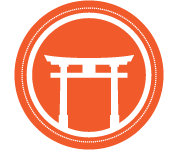Is Aikido Effective and Other Frequently Asked Questions
In the Dojo Volume 4 Issue 1
By Josh Paul Sensei, AOSB head instructor
Welcome back to In the Dojo, the newsletter of Aikido of South Brooklyn. In this issue, we’ll be addressing some frequently asked questions about aikido. We hope this edition will answer some of your questions or help you answer someone else’s questions.
Is aikido effective?
The shortest answer to this question is “yes.” A more thoughtful answer is “Yes, however its effectiveness really depends on what you want it to do.”
Aikido training alone will probably not make you the most dominant competitive fighter in the world or bring you fame and glory in the ring. Aikido wasn’t designed for that. However, aikido will teach you self-defense skills, and will help you to feel safer, more centered, and healthier. It can teach you to meet and resolve conflict; find community and purpose; and get fitter and more balanced (literally and figuratively.) The primary purpose of aikido as explained by aikido’s founder Moriehei Ueshiba (known as O’sensei) is to “polish the spirit,” and it is very effective at doing so.
Are there competitions, teams, and scholarships in aikido?
No, there are not. Aikido is intentionally practiced as a non-competitive form of martial arts. Competition can help “polish the spirit,” but not everybody who seeks to polish their spirit needs or wants competition. For many aikido practitioners the absence of competition is a huge relief. After all, we live in a world of omnipotent competitiveness. We compete for the empty checkout line at the market; a seat on the subway; our boss’s (or sensei’s) attention. We compete with co-workers, peers, and even family members (e.g., who gets the shower [and hottest water] first.) Aikido is practiced for its own sake. Not to compete and not to win. O’sensei said that “true victory is self victory.”
How long does it take to get a black belt?
It depends on the dojo, sensei, and organization. AOSB uses the promotion curriculum of the Aikido World Alliance, an international organization affiliated with the Aikikai Foundation, Aikido World Headquarters in Tokyo, Japan. There are minimum time requirements for promotion to each rank. In this system, a student can achieve black belt (shodan) in about 5 years with a dedicated, regular practice (3 or more days per week), seminar attendance, and study off the mat. The minimum age for promotion to black belt is 16 years. All of our black belt ranks are recognized by the Aikikai Foundation.
Are there different styles of aikido? Which is the best?
Like any art, aikido is open to a wide range of personal interpretations and expressions. It’s one of the things that makes aikido unique and wonderful. Different teachers emphasize different aspects of technique and philosophy, and often change that emphasis throughout their careers. Aikido is not static. It is an evolving and changing art form. The best style of aikido is the one that speaks to you.
Is there punching, kicking, and wrestling in aikido?
Striking and kicking are part of aikido. It is important to understand different types of attacks to be able to practice defenses against them. Groundwork such as wrestling and grappling are not part of the traditional aikido curriculum although there are now many practitioners exploring how to apply aikido technique to groundwork.
Is aikido a religion? Do I have to bow?
Aikido is not a religion. O’sensei practiced Shintoism, the native religion of Japan, and is said to have frequently referred to The Kojiki when teaching. The Japanese martial arts are also associated with Zen Buddhism. This was the sect of Buddhism practiced by the samurai class. You do not have to study or practice Shintoism or Buddhism to practice aikido.
Bowing is a foundational component of Japanese culture and dojo culture. Generally, dojo will not require anyone to bow if doing so contradicts their beliefs.
What are your Covid prevention strategies?
We’ve utilized a variety of methods to keep our members safe and healthy. A detailed description was previously published in the August 2020 edition of In the Dojo.
How do I start?
At AOSB, it’s easy! Take a free trial class.
How often should I attend class?
As often as possible, and at least 2 days per week.
Are there beginner classes?
It depends on the dojo. At AOSB, all of our classes are mixed ranks. This gives new students the benefit of training with experienced practitioners who have the responsibility of guiding new students. New students have the responsibility of being attentive and enthusiastic.
Do I have to sign a long contract?
This depends on the dojo. At AOSB, we do not require our members to sign long-term contracts. You can read about the terms of AOSB membership here.





